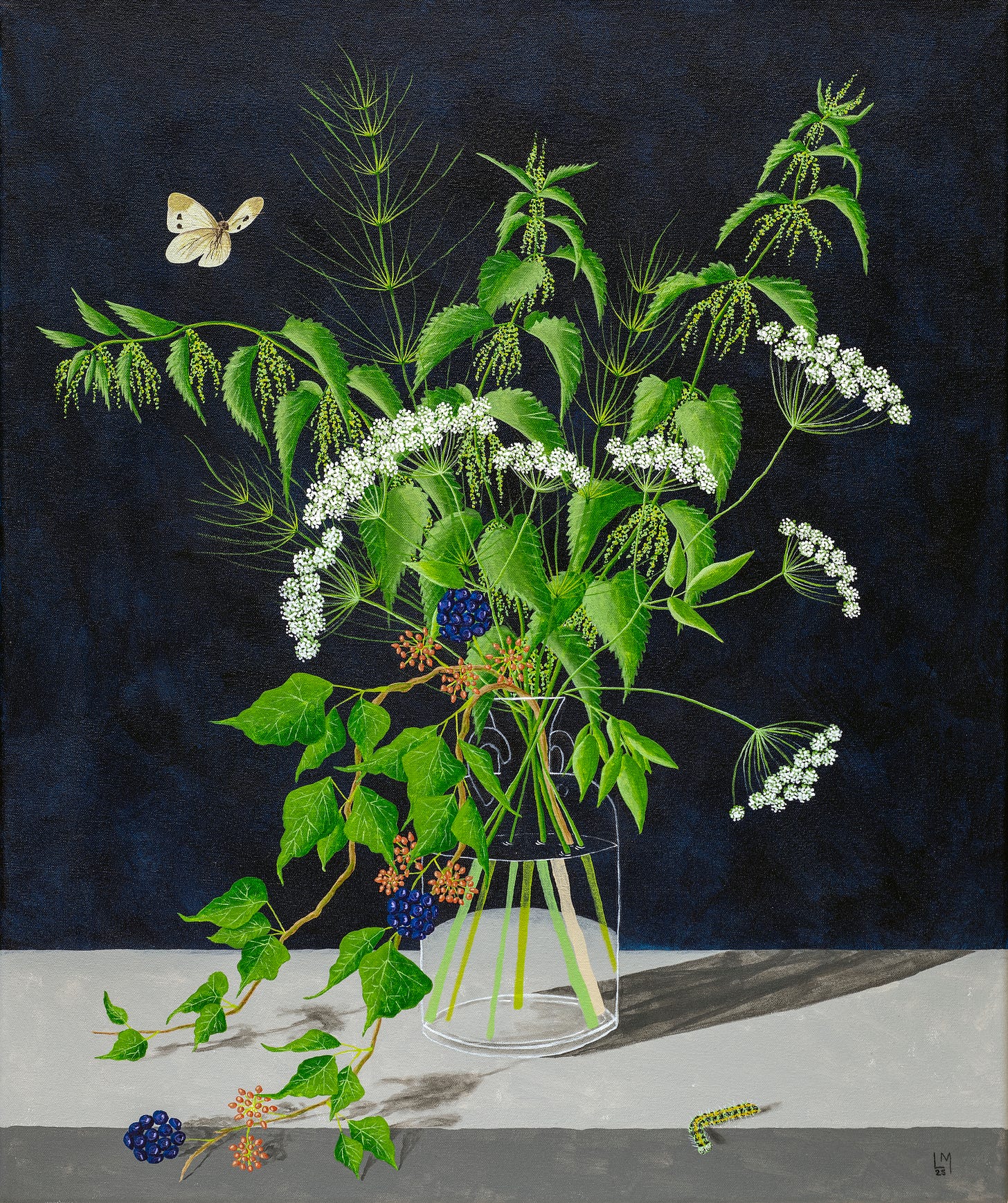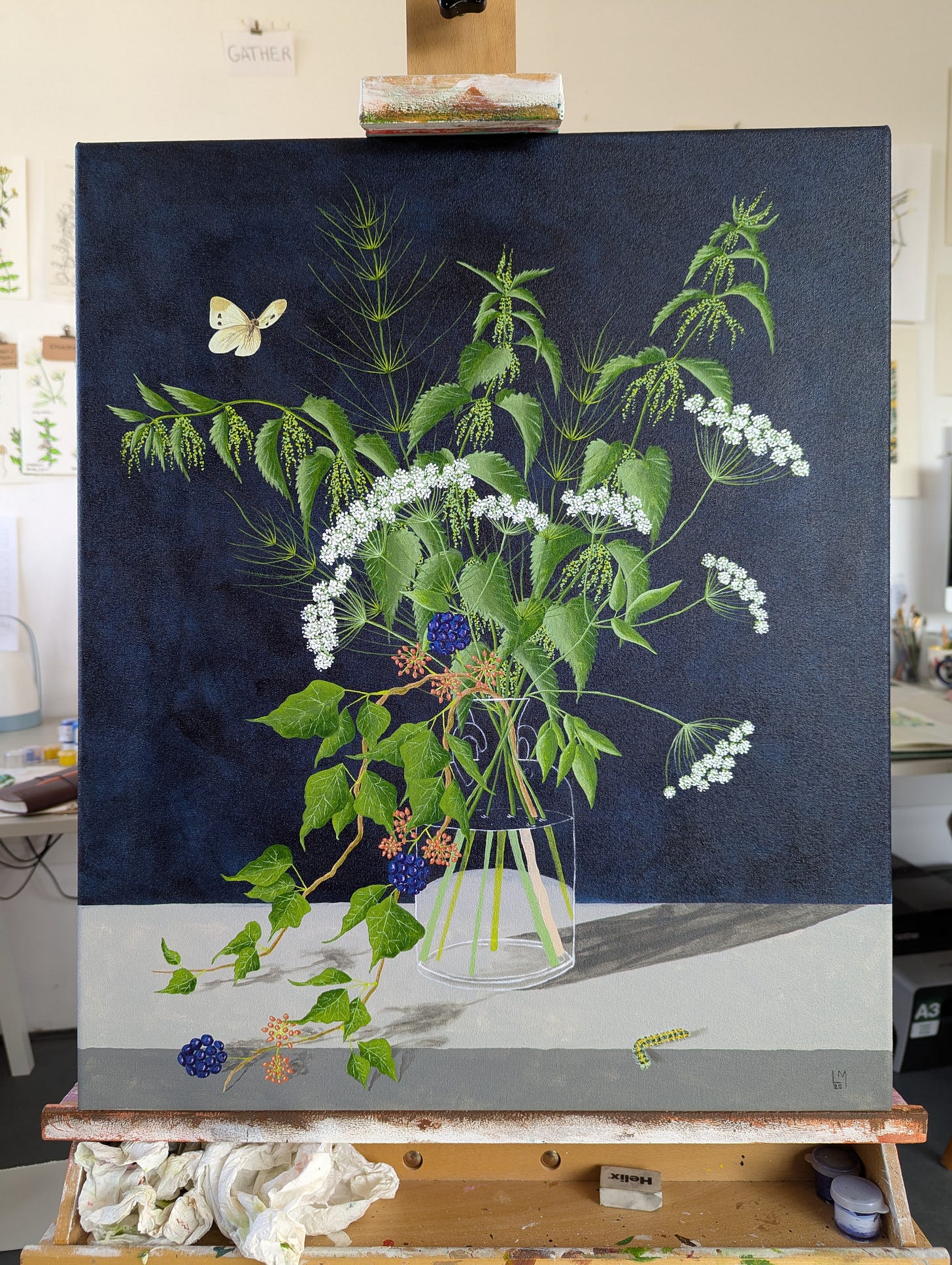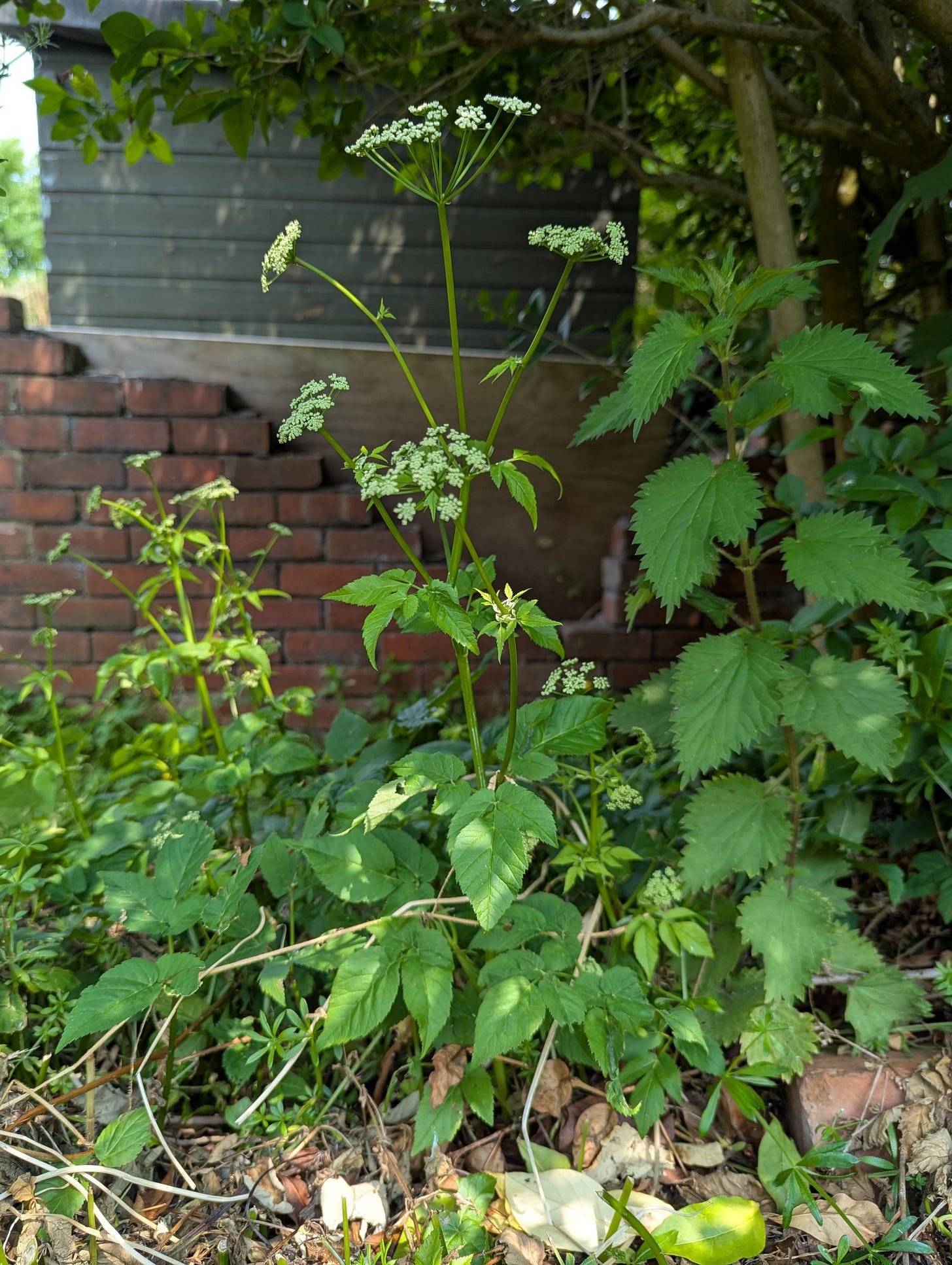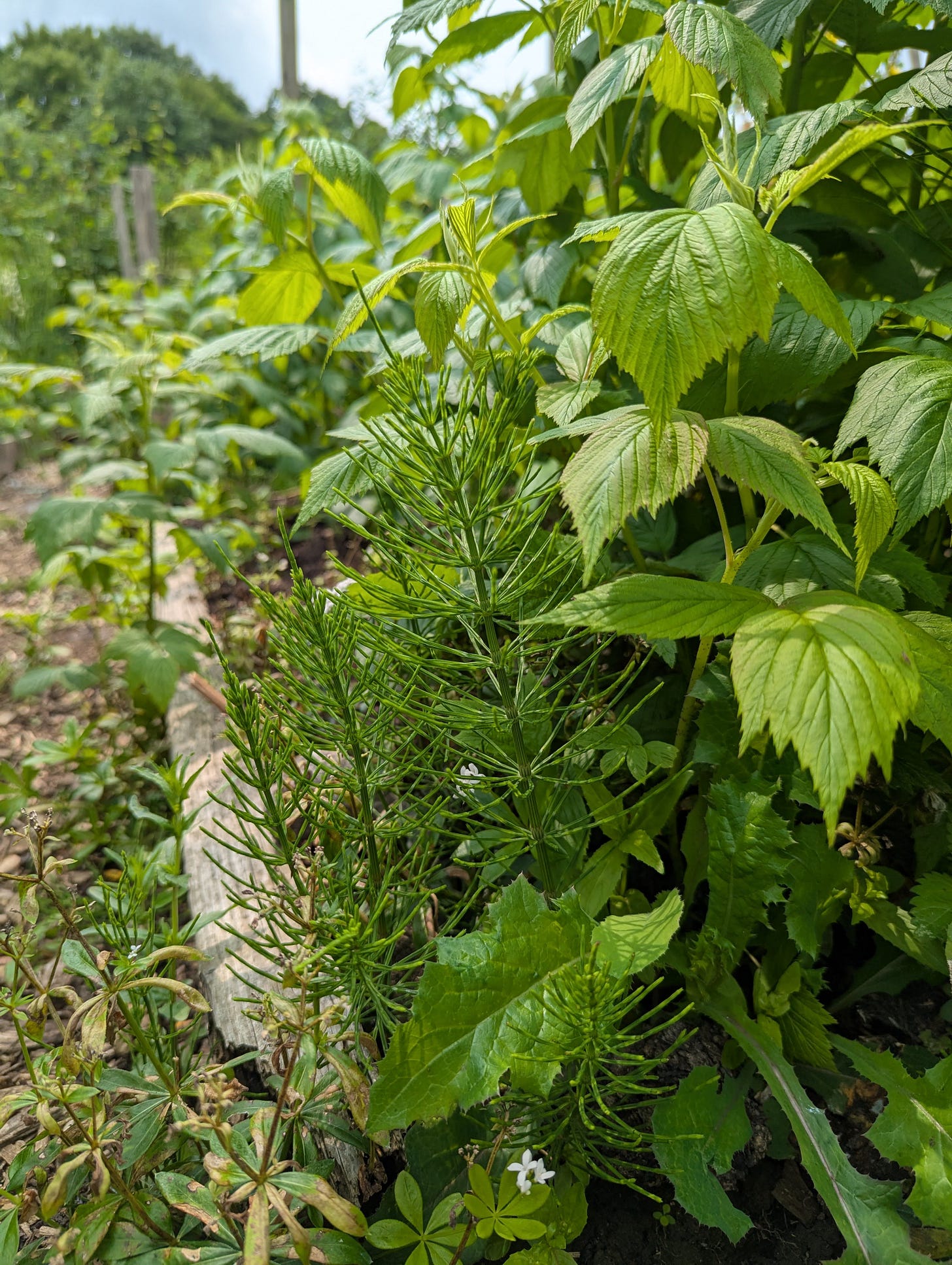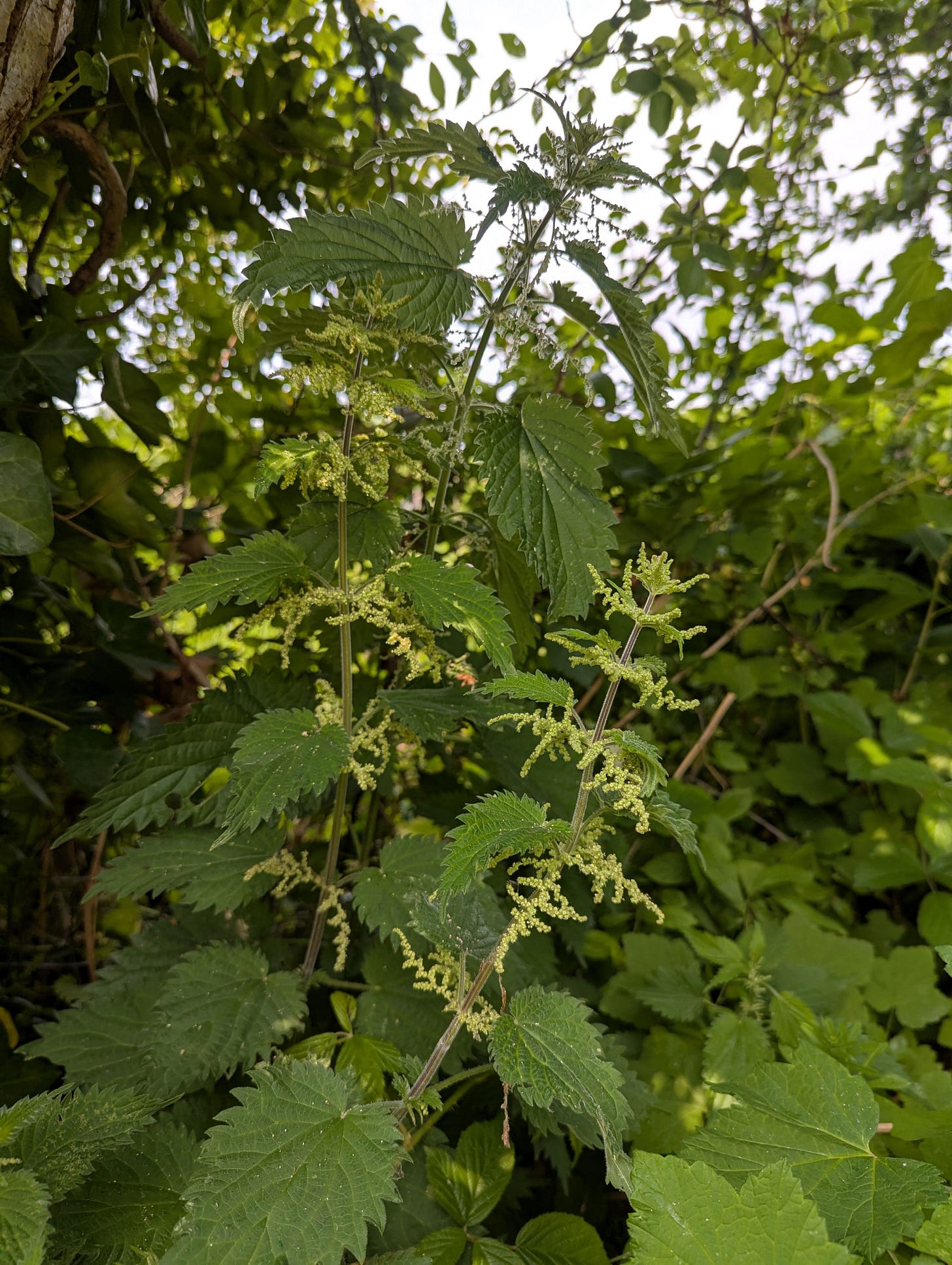The Hidden Story... 'For Resilience
Creation, destruction, forgotten gout treatments, horse tricks and lusty pensioners play their part in inspiring this arrangement in celebration of the 'villains' of the hedgerow
Introduction
This series of blogs explores the deeper meanings of the paintings created for ‘Gather’, rooted in herbalism, folklore, ritual and superstitions. You can explore the published articles for the following paintings;
For Resilience - You are here 📌
You can visit these paintings in person from 30 May - 21 August 2025 at The Bowery, Leeds.
A Retelling
The arrangements are intended as ‘visual potions’, enabling the canvas to become both cauldron and almanac. The format of these articles will follow a similar structure to help you connect with the meaning of each. Herbalist and folkloric knowledge has historically relied on the gathering and retelling of wisdom, which is then added to, forgotten, transformed and passed on. My interpretation and retelling relies on the collective knowledge of countless generations of healers, wise folk and elders for whom I’m eternally thankful. In particular I’m thankful to the generosity and patience of Jo Dunbar who spent many hours sharing her knowledge with me to inform these compositions.
May you feel compelled to wander in the wild places with a renewed sense of wonder.
For Resilience
Featuring
Ground Elder / Horsetail / Ivy / Nettle
Keywords
Resilience / Adaptability / Survival / Thrive / Hidden Talents / Tenacity / Connection / Achievement / Generosity / Belonging
An Incantation
Springing out of forgotten corners, deep roots find nourishment… I can’t be weeded out… Winds come, bend… Sun beats, thicken… Rains fall, drink… Change strikes fear into the stubborn, thriving is resistance
Inspiration
Richard Mabey writes that “Plants become weeds when they obstruct our plans, or our tidy maps of the world.” in his book ‘Weeds: the story of outlaw plants’. This arrangement is a celebration of these ‘villains’. The survival of these plants in the face of such hostility is a credit to their resilience. I don’t believe plants should ‘earn their keep’ by being of direct use (or ornament) to humans in order to be appreciated, however, I’m going to loosely touch on some possible applications which might give you a different lens in which to view them.
Ground Elder
Said to have been introduced by the Romans as an edible and medicinal crop, Ground Elder spreads voraciously through a network of shallow, easily-breakable, spaghetti-like roots. I have spent hours carefully removing the herb from the allotment, as it regenerates from the tiniest amount of root left behind. John Gerard, a gardener in the 16th Century complained that the plant was “so fruitful in his increase, that where once it hath taken root, it will hardly be gotten out again, spoiling and getting every yeere more ground, to the annoying of better herbes”. Against the accepted wisdom of fellow plotters, we welcome the plant in the hedges and edges of the plot, where we pick it in spring to stir fry for quick lunches, it’s ideal in the ‘hungry gap’ in spring, before other crops are ready to pick. Exceptionally high in vitamin C, the plant was once used to treat scurvy. Alternatively known as goutwort or bishop’s weed, this diuretics ability to flush toxins from the system has also been used to treat gout and rheumatic joints.
Horsetail
The Doctrine of Signatures encourages us to look at plants to discern their uses. The tall, stiff, segmented stem resembles the vertebrae of a spine. A great source of silica - necessary for collagen production - the plant can be used as a building block to strengthen hair, nails, skin, joints and tissues that are weakened or damaged. This ancient plant lived alongside the dinosaurs and the deep roots are impossible to dig out, making it a master of resilience and survival. These deep roots draw minerals up to the surface making them accessible for our use, however, if you’d rather not drink horsetail tea you can use the plant to scrub pots and clean metal, perfect if you’re in a pinch whilst camping.
Ivy
Associated with both creation and destruction, Ivy is a beautiful plant of balance and contradictions. Providing a late source of pollen for bees, the flowers then turn into a food source for birds through winter and the evergreen foliage shelters creatures from harsh weather. A keen climber, Ivy spirals around old trees acting as a supportive brace and protects buildings from damp, but it can also be rather destructive by strangling trees and damaging walls. The clinging, persistent nature of the plant’s growing habit speaks of an admirable tenacious, ruthless attitude that can’t be simply categorised as good or evil. Used as a tool for divination, Ivy could foretell owners losing their homes, predict the specifics of ill health in a coming year or help a wearer of an ivy crown discern someone's true character.
Nettle
This generous plant has historically been a source of food, medicine and clothing for people as well as supporting over 40 species of insects which rely solely on the nettle for their survival. Combined with ground elder or horsetail, mineral-rich nettles boost the detoxifying treatments for gout and arthritis previously described. The stings of nettles inject histamine into the skin, increasing blood flow and easing tired or arthritic joints, Roman soldiers used to routinely flay themselves with the herb for these purposes. There’s a story of a horsebreeders trick where an old horse is fed nettle seeds to give it a healthy looking coat. On buying a strapping looking horse, it would then degenerate into an old nag in a matter of weeks. Testing this tale out on humans, a nursing home director supposedly added a tablespoon of the seeds into the resident’s porridge, and was surprised to find them becoming alert and lusty.
Selected Bibliography
A range of sources have been used to research the compositions. Below are a selection of my most frequently used references.
Baker, M (1969) Discovering the Folklore of Plants
Dunbar, J (2022) Secrets from a Herbalist’s Garden
Dunbar, J (2016) The Spirit of the Hedgerow
De Baïracli Levy, J (1974) The Illustrated Herbal Handbook
Oakley Harrington, C (2020) The Treadwell’s Book of Plant Magic
Getty Publications (2004) Nature and Its Symbols
Podlech, D (2016) Herbs and Healing Plants of Britain and Europe
Carr-Gomm, P & Carr-Gomm, S (2007) The Druid Plant Oracle
Lawrence, S (2023) Witch’s Forest
Lawrence, S (2020) Witch’s Garden
Richards, G (2021) Weeds
A note on medical advice
Just to say that although I have conducted research on the use of plants in the treatment of health conditions, I am not a trained medical herbalist. The contents of this Substack publication or individual arrangements does not equate to medical advice. If you’re curious about the use of plants, you should seek the expert guidance of a qualified medical herbalist. I’d recommend one of Jo’s books as a wonderful place to start.




